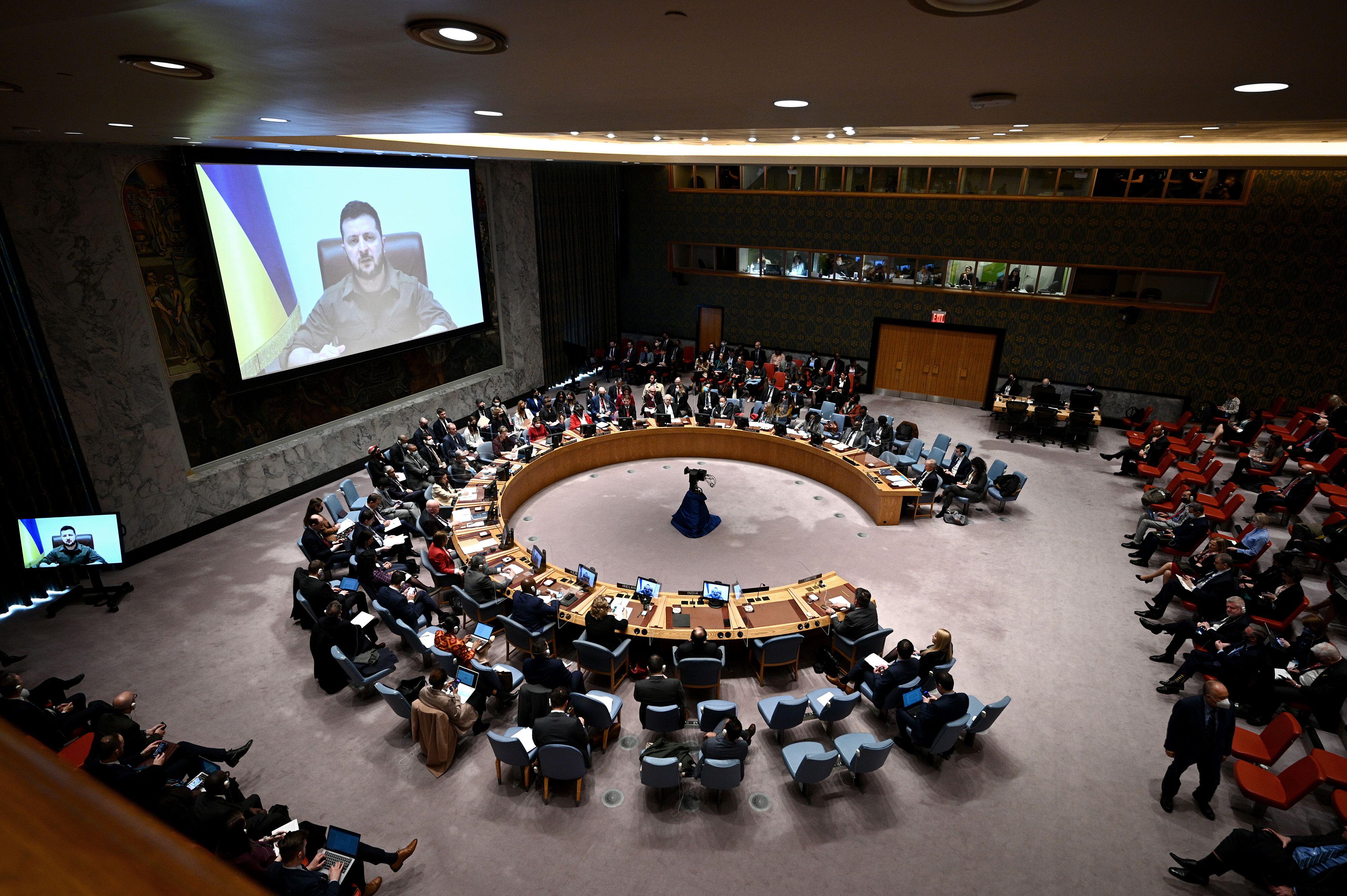Zelensky, Volodymyr (1978-…), became the president of Ukraine in 2019. Before entering politics to run for president, he had a successful entertainment career as an actor, comedian, creative director, and producer. The official spelling of his name is Zelenskyy, but English-language sources usually spell it Zelensky.


Volodymyr Oleksandrovych Zelensky was born on Jan. 25, 1978, in the city of Kryvyi Rih (also spelled Kryvyy Rih) in southern Ukraine. Ukraine was a part of the Soviet Union at that time. It became an independent nation in 1991. Zelensky studied at the Kyiv National Economic University from 1995 to 2000 and graduated with a law degree.
While still a university student, Zelensky began performing as a stand-up comic. He became part of an improvisational comedy group called 95 Kvartal (Quarter 95), which was named after a neighborhood in central Kryvyi Rih.
In 2003, Zelensky cofounded Studio Kvartal-95, a production company that has created many popular television shows and motion pictures. He served as creative director from 2003 to 2011 and from 2013 to 2019. In 2012, the company entered a joint production agreement with 1+1, a network owned by Ihor Kolomoisky, one of the wealthiest businessmen in Ukraine. Beginning in 2008, Zelensky also appeared in several Ukrainian motion pictures.
From 2015 to 2019, Zelensky starred in the television comedy “Servant of the People.” He played Vasyl Holoborodko (also spelled Vasily Goloborodko), a high-school teacher whose students record him speaking out against government corruption. The video goes viral (spreads quickly over the internet) and results in the teacher’s being elected president. Nationwide anger over actual corruption scandals in Ukrainian business and government contributed to the program’s popularity and sense of relevance.
On Dec. 31, 2018, Zelensky joined a crowded field of candidates running in the nation’s 2019 presidential election. The following March, he received the most votes in the first round of the election. The top two candidates competed in the second voting round on April 21. Zelensky defeated the incumbent president, Petro Poroshenko, with a landslide 73 percent of the votes.
Zelensky took office on May 20. His party, called Servant of the People, had only become a registered political party in early 2018. It had no lawmakers in parliament, so Zelensky called an early parliamentary election. In July, Servant of the People became the first single party to win a majority of the seats in Ukraine’s parliament since the nation became independent in 1991. Zelensky’s major policy goals included eliminating government corruption and working to resolve a conflict with pro-Russian separatists in eastern Ukraine that had begun in 2014. In October 2019, Zelensky and the separatists signed an agreement that outlined steps for holding local elections in the region. In December, they conducted a prisoner exchange. Tension in the region continued, however.
Also in 2019, Zelensky and Ukraine were affected by an American political scandal that resulted in the United States House of Representatives impeaching U.S. President Donald J. Trump. The House charged Trump with having aides withhold funds that Congress had approved for military assistance to Ukraine while Trump pressured Ukraine to investigate his political rival Joe Biden. Zelensky never agreed to take any action on Trump’s behalf. The U.S. Senate held an impeachment trial in 2020, but the vote fell short of the two-thirds majority needed to convict Trump.
In 2021, Ukraine faced a mounting threat from Russia. Russian president Vladimir Putin had long opposed Ukrainian governments that, like Zelensky’s, tried to develop closer relations with Western nations. Russia began massing troops near the Ukrainian border, claiming the troop movement was only for military exercises. The number of troops reached more than 100,000 by January 2022 and more than 150,000 by late February. Putin demanded that Ukraine reduce its military forces and promise never to join the North Atlantic Treaty Organization (NATO). NATO is a military alliance that includes the United States, the United Kingdom, Canada, and more than 20 other countries. Ukraine had expressed an interest in joining NATO. Zelensky urged calm, but refused to agree to let Russia dictate Ukraine’s foreign policy.
On Feb. 21, 2022, Putin declared that Russia officially recognized the separatist-claimed areas in eastern Ukraine as independent and would send forces to “maintain peace” there. On February 23, pro-Russian separatist leaders in eastern Ukraine asked Russia to send troops to help them. In the early hours of February 24, Zelensky addressed the people of Ukraine and Russia. He said Ukrainians are a free people who wish to determine their own course while living in peace with their neighbors, but they would defend themselves if attacked. A few hours later, Russian missiles began striking cities and other targets throughout Ukraine. Russian troops poured across Ukraine’s northern, eastern, and southern borders. Many nations condemned Russia’s invasion.
Zelensky remained in Kyiv and in contact with the Ukrainian people as Ukraine’s military battled Russian forces that sought to surround and capture a number of cities, including Kyiv. Zelensky also worked to rally support from other nations.
